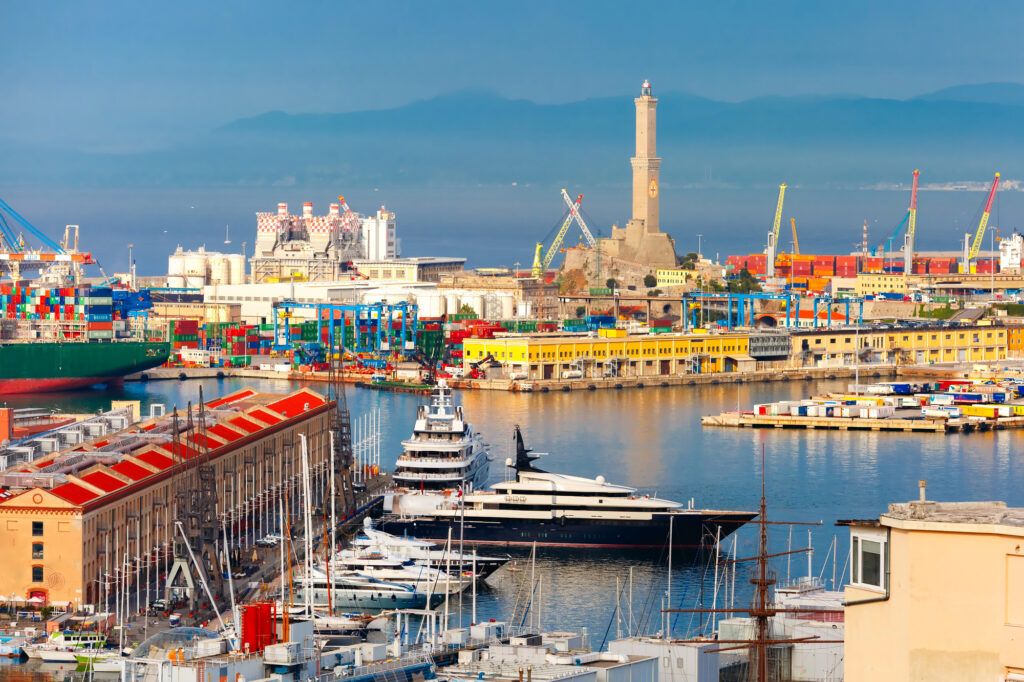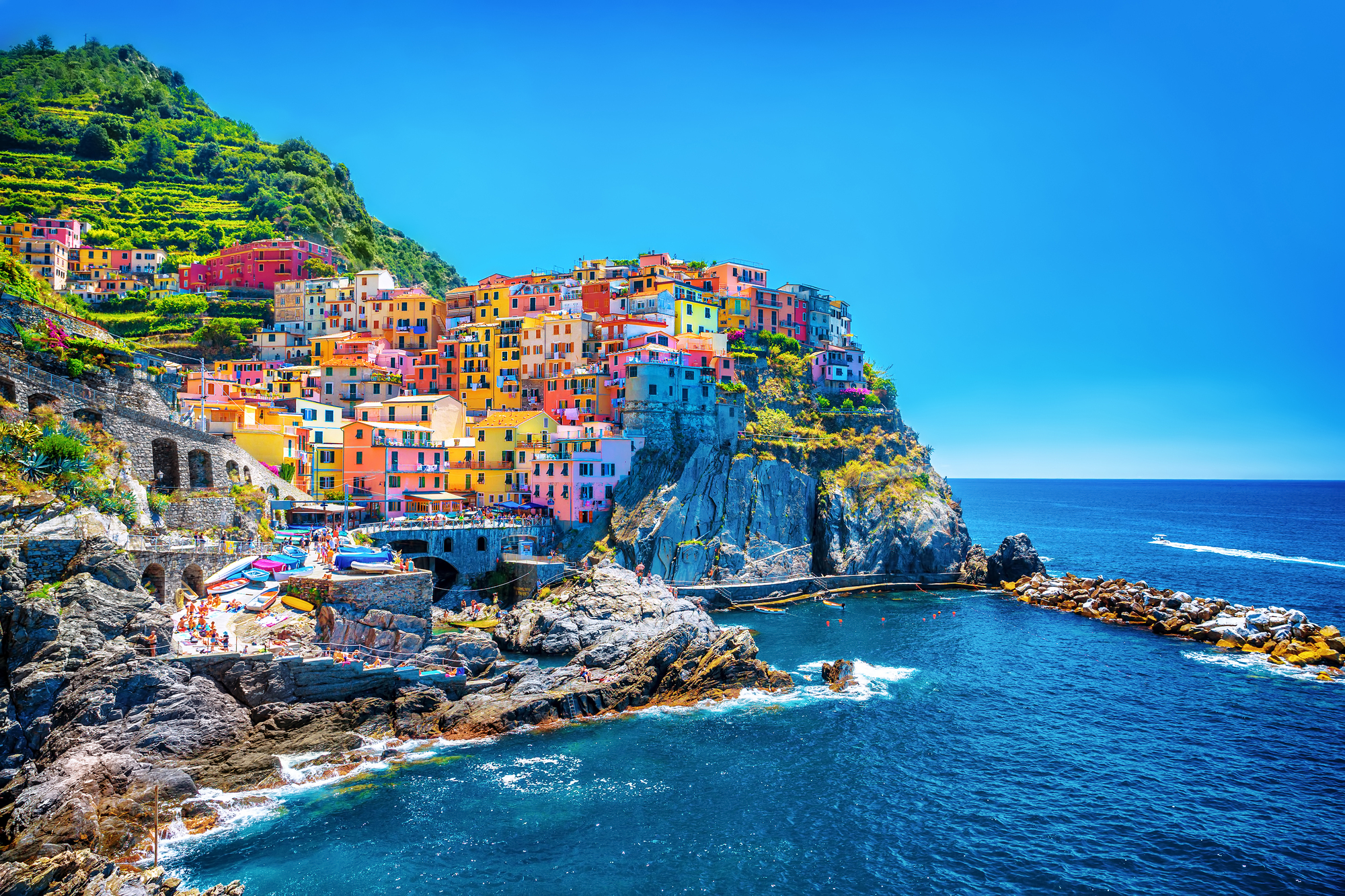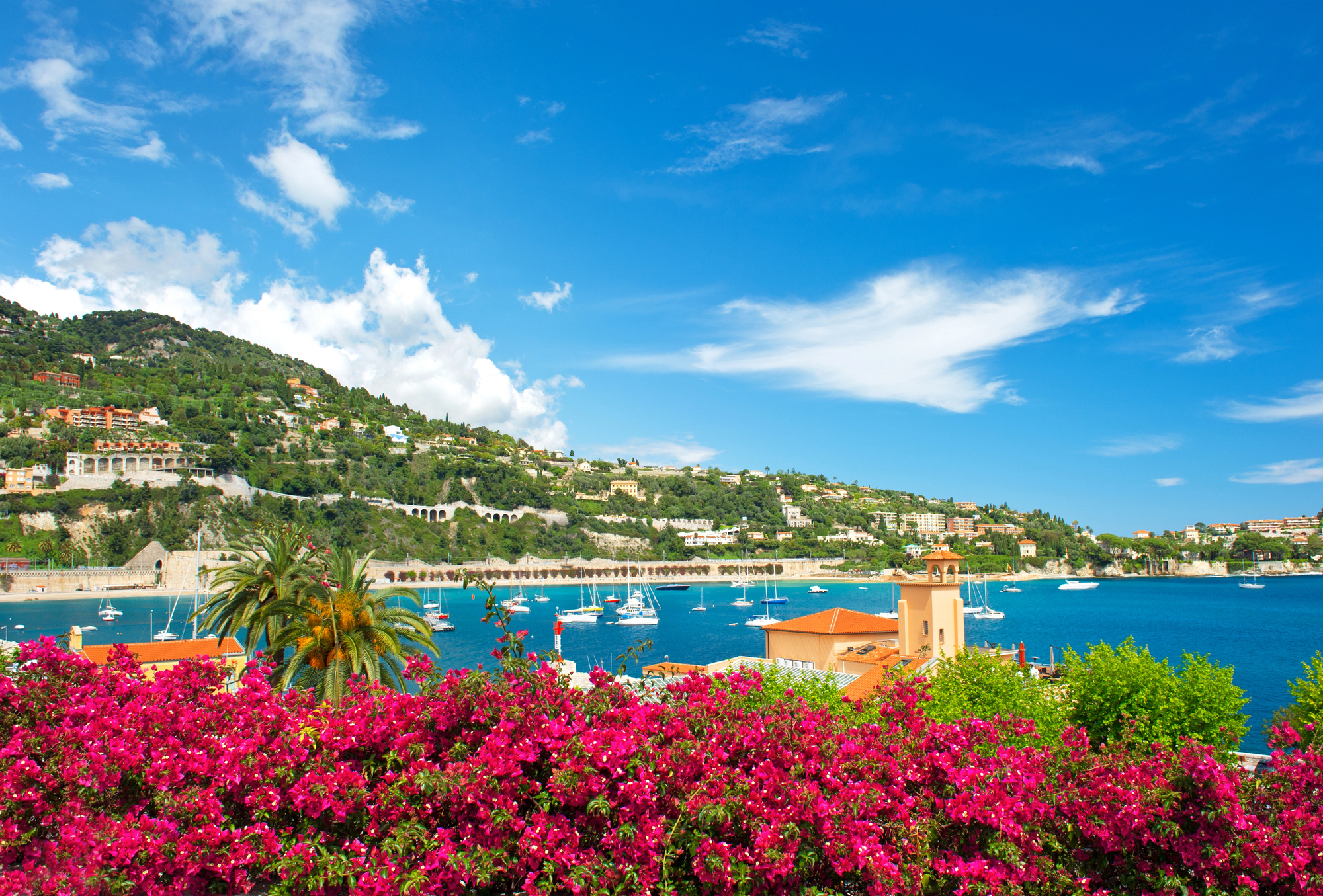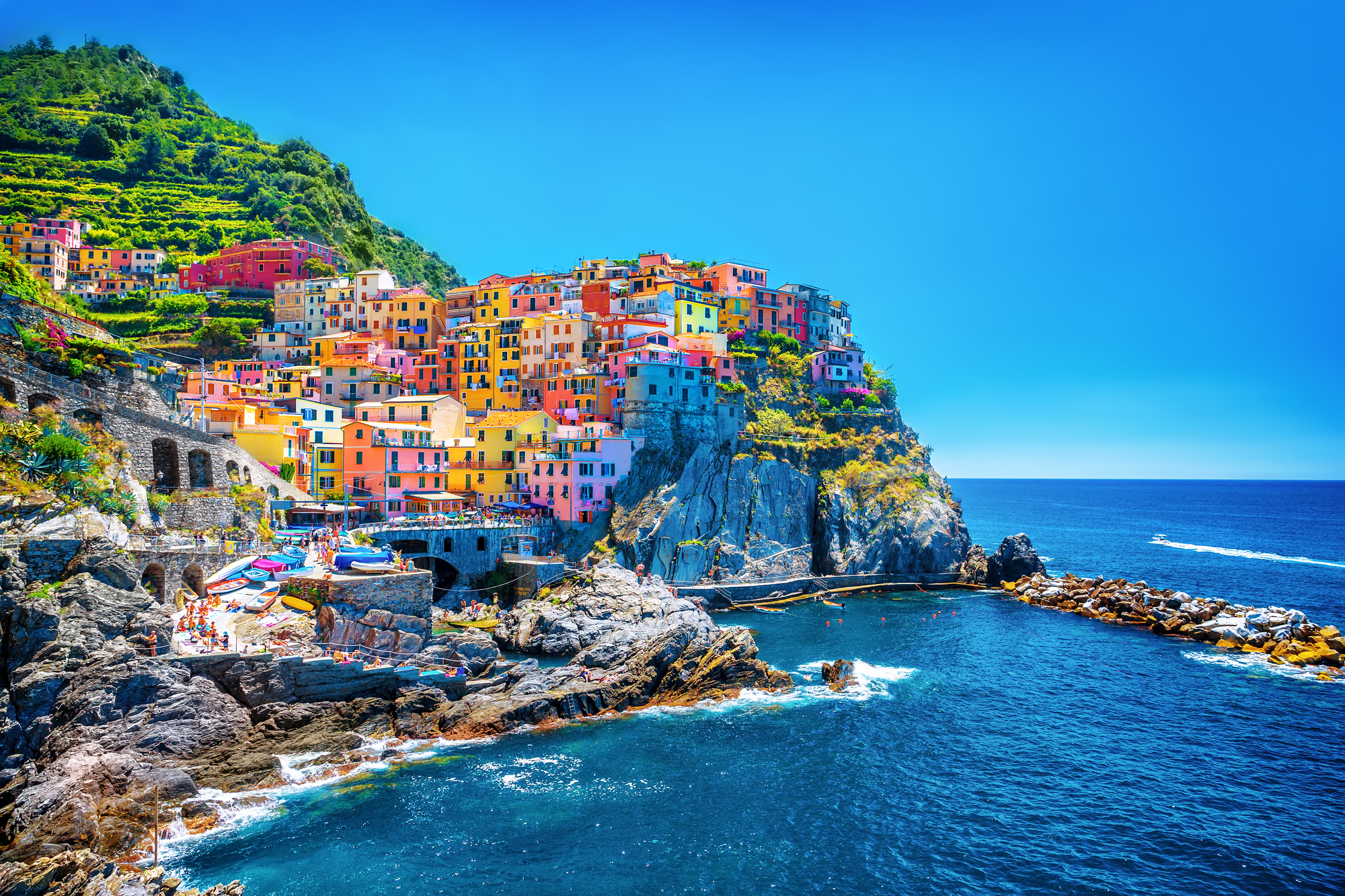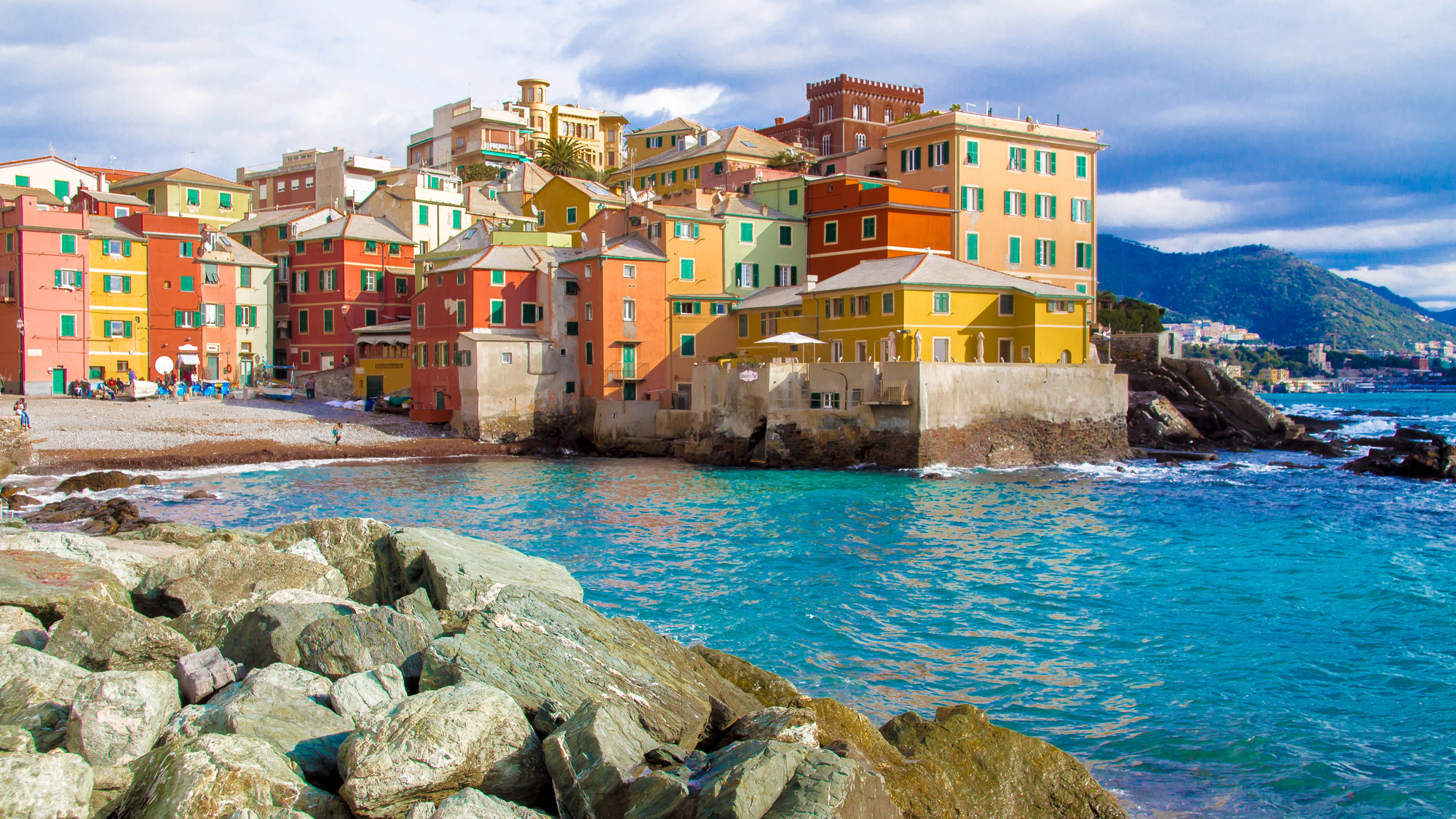Welcome to Genoa, the hidden gem of the Mediterranean and Italy’s biggest seaport. When your cruise ship docks, you’re just minutes from a city bursting with stunning palaces, lively piazzas, and the birthplace of real pesto. The Genoa cruise port is right by the historic center, so most people can walk to the main attractions in about 5-10 minutes—though you might hit a few steps, depending on where you dock.
Genoa (locals call it Genova) is the proud capital of Liguria, mixing maritime history with Italian charm—without the intense crowds you get in Venice or Rome. From the grand Piazza De Ferrari and its famous fountain to the pastel fishing village of Boccadasse, the city rewards anyone who wanders a little further from the terminal.
Get a discount of 15% to 70% on accommodation in Genoa! Look for deals here:
Genoa Hotels, Apartments, B&Bs
You can spend your day exploring Christopher Columbus’ house, checking out the striped Cathedral of San Lorenzo, or even joining a pesto-making class to pick up the secrets of Liguria’s most famous food. Genoa’s compact layout means you can hit a lot of highlights—even if you’re pressed for time. It’s honestly a fantastic stop on a Mediterranean cruise.
Overview of the Genoa Cruise Port
Genoa’s cruise port blends history and modern convenience, making it one of Italy’s busiest gateways. You’ll have easy access to the city center, and it works as both a starting point and a stopover for Mediterranean cruises.
Port of Genoa: Location and Accessibility
The Port of Genoa is about a 5-10 minute walk from the city center. That’s hard to beat for cruise passengers. You can check out Genoa’s best spots without needing complicated transport.
From the port, you can hop on the metro to reach major sights. Here’s how most people get around:
- Walking: Works for most of the city’s main draws
- Metro: Closest station is only 5-10 minutes away
- Taxis: Usually lined up at the terminal
- Public buses: Several lines serve the port
Genoa’s central spot in the Mediterranean makes it a key stop for cruises between Spain, France, and other Italian cities. The UNESCO-listed palaces are just steps away, so you get instant culture the moment you step off the ship.
Stazione Marittima and Cruise Terminals
Stazione Marittima is Genoa’s main cruise terminal—a striking building that handles most of the traffic. You’ll find:
- Information desks
- Luggage storage
- Duty-free shops
- Refreshment areas
- WiFi
- Currency exchange
The terminal got a big facelift in recent years, updating facilities but keeping its historic look. Different piers handle ships of all sizes, with space for the big ones.
Security is pretty standard: baggage screening, passport checks, all the usual. When it’s busy, expect several ships docked at once across different parts of the terminal.
Signs are clear, and staff generally speak English.
Cruise Lines and Seasonal Traffic
MSC Cruises is the big player here, using Genoa as a main home port. Costa Cruises, Royal Caribbean, Silversea, Oceania, and a few others stop by often.
The cruise calendar looks like this:
- Peak season: May to October—tons of ships, lots of people
- Shoulder season: March-April and November—still busy, but less packed
- Low season: December-February—quieter, but ships still come and go
In summer, you might see 3-4 big ships docked at once, with thousands of passengers passing through. The port handles about 1.5 million cruise travelers every year.
Most cruises from Genoa head west around the Mediterranean—think Spain, France, and more of Italy. MSC usually runs 7-day trips, making Genoa a starting point for many, not just a quick stop.
You can book shore excursions with your cruise line, but honestly, it’s easy to explore on your own thanks to the port’s location.
Arriving and Departing the Cruise Port
The Genoa cruise port makes arrivals and departures pretty painless. Knowing the basics helps you breeze through the terminal and get on with your Italian adventure.
Passenger Check-In and Security Procedures
Check-in at Stazione Marittima usually opens 4-5 hours before your ship leaves. Try to arrive 2-3 hours ahead so you’re not stressed. Bring your booking confirmation, passport, and any visas you need.
Here’s the usual process:
- Drop your bags with porters outside
- Head to the check-in counters with your documents
- Get your cruise card (this is your onboard ID and payment card)
- Go through security (think airport-style)
Security includes X-ray scans and metal detectors. Genoa keeps things tight, so you’ll show your documents a couple of times.
For departures, cruise lines give you detailed disembarkation info the night before.
Customs and Immigration in Genoa
Italian immigration officers may check passports for non-EU travelers. EU citizens usually just show their ID cards.
When you return to Genoa after your cruise, it’s usually straightforward. Here’s how it tends to go:
- Disembark by assigned groups
- Non-EU travelers show passports at immigration
- Customs forms are only needed if you’re over the limits
Allowances include:
- €430 in goods for adults
- 200 cigarettes or 50 cigars
- 1 liter of spirits or 4 liters of wine
Customs officers sometimes do random baggage checks, but most people get through quickly. The port moves thousands every day, so they’re efficient.
Luggage Handling and Services
The terminal has several luggage services to make life easier. Porters outside will take your bags during check-in for about €2-3 each (tip if you can).
If you’re arriving, you’ll find:
- Luggage storage at the terminal (€5-10 per item per day)
- Porter help to taxis or buses
- Luggage delivery to your hotel (book this ahead)
If you’ve got a late flight, many ships let you stay onboard until mid-morning. Otherwise, Stazione Marittima has comfy waiting areas, restrooms, and small cafés.
Look for the baggage claim area marked with your cruise line’s logo. Staff organize luggage by deck or cabin, so it’s not too hard to spot your stuff.
Transportation Options to and from the Genoa Cruise Port
Getting to and from the Genoa cruise terminal is simple, with plenty of budget options. Thanks to the port’s central spot, it’s easy to reach the city center or connect to other parts of Italy.
Public Transportation Connections
Honestly, the free metro is your best bet from the cruise port. It stops right across from the terminal and takes you to the city center in four stops—no need to shell out for pricey shuttles or taxis. Trains run all day.
If you’re coming from Genoa Airport, the AMT bus goes straight to the port. One-way tickets are about €5, available via the AMT app or on the bus. The ride takes 20-30 minutes, depending on traffic.
Prefer a private ride? Business car transfers between the port and city center start at $72-75. They’ll pick you up and drop you off wherever you want—just book in advance.
Train Service to Genova Piazza Principe
Genova Piazza Principe is the main train station for the port area, with links to Milan, Rome, Florence, and more. It’s about a 15-minute walk from the terminal.
You can walk from the station (though there are some hills and steps) or grab a taxi if you’ve got a lot of bags. The route is marked, so you probably won’t get lost.
Regional trains connect Genoa to coastal towns like Portofino and Cinque Terre, making day trips doable if your ship’s in port for a while. Tickets are pretty affordable and can be bought at the station or online.
Where to Stay Near the Genoa Cruise Port
Staying near Genoa’s cruise port puts you close to both your ship and the city’s best sights. There are plenty of hotels and cool neighborhoods within walking distance of the terminal and the historic center.
Recommended Hotels and Accommodation
NH Collection Genova Marina has premium rooms with harbor views right at the port. Super convenient—you can walk to your ship in minutes.
Grand Hotel Savoia is a classic, with elegant rooms and a bit of old-world flair. It’s near Piazza Principe station, about a 10-minute walk from the cruise terminal.
Hotel Continental and Best Western Hotel Porto Antico are solid mid-range picks close to the port. They both offer comfortable rooms at fair prices.
On a budget? Hotel Astoria is basic but clean and close to the terminal. Nothing fancy, but it does the job for a night or two.
Most hotels near the port are fully refundable, so you’ve got flexibility if plans change.
Nearby Neighborhoods for Lodging
Stazione Principe and Via Balbi are probably the best areas for hotels, no matter your budget. This stretch sits between the port and the historic center, so you’re perfectly placed for exploring.
The historic center right by the port is packed with charming places in old buildings. You’ll be surrounded by narrow medieval streets, restaurants, and shops. It’s the real Ligurian vibe, and you’re still close to your ship.
If you want something quieter, Nervi is a good bet. It’s an upscale residential area east of downtown with a more laid-back feel, but you can still get to the port easily by public transport.
Some travelers pick neighborhoods outside the center to see a different side of Genoa. These places often have more space and give you a peek at daily life away from the touristy bits.
Top Things to Do in Genoa Before or After Your Cruise
Genoa gives cruise travelers loads to see and do within walking distance of the port. The city’s got a fascinating maritime history, gorgeous architecture, and plenty of culture—perfect for a pre- or post-cruise wander.
Historic Sights and Landmarks
The UNESCO-listed Palazzi dei Rolli are a must. These Renaissance and Baroque mansions once hosted visiting VIPs and now show off Genoa’s old wealth and style. You’ll find several along Via Garibaldi.
The Palazzo Ducale (Doge’s Palace) is the city’s cultural heart, hosting art shows and events year-round. The facade and inner courtyards are worth a look, even if you don’t go inside.
Piazza De Ferrari, with its iconic bronze fountain, sits at the center of modern Genoa. Important buildings like the Opera House and the Palace of the Doges surround it.
And don’t skip the supposed birthplace of Christopher Columbus—a tiny house near Porta Soprana dedicated to Genoa’s most famous son. Whether it’s the real deal is up for debate, but it’s a neat peek into medieval life.
Museums and Cultural Attractions
The Musei di Strada Nuova is actually a trio of palaces—Palazzo Rosso, Palazzo Bianco, and Palazzo Tursi—packed with European art from the 1400s to the 1700s. You’ll spot works by Rubens, Van Dyck, and a handful of other old masters.
Galata Maritime Museum gives you a hands-on dive into Genoa’s seafaring past. There’s a reconstructed 17th-century galley ship and even a real submarine you can board. Kids and grownups both seem to get a kick out of it.
If you’re into modern art, the Museum of Contemporary Art at Villa Croce hosts rotating exhibitions inside a 19th-century villa, surrounded by peaceful gardens.
Porto Antico (Old Port) isn’t just a relic—it’s now a lively cultural spot. Renzo Piano (yes, that Renzo Piano, the architect) helped design the area, which now has restaurants, shops, and entertainment venues with a view of the sea.
Aquarium of Genoa
The Aquarium of Genoa is massive—Europe’s largest marine life center and, apparently, Italy’s most visited spot after the Vatican. Right at Porto Antico, it’s home to more than 12,000 animals from 600 species across 70 tanks.
Don’t miss the dolphin pool, the crazy-bright tropical fish, and the jellyfish tanks (they’re mesmerizing). You’ll also run into sharks, seals, penguins, and even manatees along the way.
Give yourself a solid 2-3 hours to see everything. The path winds through Mediterranean, Atlantic, and tropical habitats. Interactive displays break down marine ecosystems and why conservation matters—some of it’s pretty eye-opening.
Booking tickets online is a smart move, especially during summer or weekends. The aquarium really connects you to Genoa’s maritime roots, and you’ll likely leave thinking a bit more about ocean conservation.
Exploring the Genova Waterfront
Genoa’s waterfront is this odd but lovely mix of history and modern buzz. Old buildings got a facelift, new venues popped up, and the Mediterranean is never far from view.
Old Port (Porto Antico) Area
Porto Antico is the heartbeat of the city’s waterfront revival. This historic port is now a tourist magnet, but it didn’t lose its maritime soul. Cruisers dock at Stazione Marittima, and from there, you’re right in the mix.
The Aquarium of Genoa is right here—definitely worth a couple hours. The Bigo Lift, a weird but cool panoramic elevator, gives you a sweeping view of the harbor and city.
History fans should poke around the Maritime Museum (Galata Museo del Mare). It’s interactive and more fun than you might expect. Kids seem to love the children’s museum and the pirate ship.
The promenade is made for strolling. Grab a bench, watch the boats, and just soak it in.
Dining and Shopping Along the Harbor
If you like seafood, you’re in luck—waterfront restaurants serve it fresh, along with Ligurian classics. Don’t skip the pesto; try it with trofie pasta at spots like Antica Osteria di Sottoripa.
Outdoor cafés dot the harbor, good for a coffee or an aperitivo. Yeah, you’ll pay a bit more for the view, but honestly, it’s worth it.
For shopping, the Genoa Travel Guide points you to artisan shops selling local products—think pesto, focaccia, and handmade souvenirs.
Eataly Genova is right by the port, offering high-quality Italian goods and several places to eat. Handy if you want picnic supplies or edible gifts.
And if you’re in a hurry or on a budget, grab some focaccia or farinata (that’s a chickpea pancake) from street vendors. Cheap, filling, and tasty.
Local Cuisine and Food Experiences
Genoa’s food scene is a real highlight. The port brings in fresh seafood, and Ligurian cuisine leans on herbs and simple, bold flavors.
Signature Dishes of the Region
Pesto Genovese is the star here—fresh basil, pine nuts, garlic, Parmigiano-Reggiano, olive oil. They usually serve it with trofie or trenette pasta. If you’re in Genoa, you’ve got to try it the real way.
Focaccia Genovese is another local obsession. It’s rich with olive oil and sometimes topped with onions, olives, or cheese. Locals even dip it in cappuccino for breakfast (don’t knock it till you try it).
Seafood is everywhere. Look out for:
- Fritto misto (mixed fried seafood)
- Baccalà (salt cod)
- Cappon magro (a wild seafood and veggie salad)
Italian Riviera cuisine is all about freshness and simplicity. You’ll also see farinata and corzetti (stamped pasta discs) on menus.
Best Restaurants and Cafés Near the Port
Sa’ Pesta on Via dei Giustiniani is a favorite for authentic Ligurian dishes. Their farinata and pansoti (stuffed pasta with walnut sauce) are legit—locals flock here.
Il Genovese, not far from the Old Port, is famous for pesto. Their trofie al pesto is pretty much the gold standard.
Need a snack? Antica Friggitoria Carega dishes out fried seafood in paper cones. Perfect for wandering with a bite in hand.
Caffè degli Specchi in Piazza delle Erbe has great coffee and pastries. Try the pandolce (Genoese sweet bread) with your espresso if you want to do as the locals do.
If you’re feeling fancy, Ristorante Zeffirino has been around since 1939 and is known for traditional Ligurian seafood and homemade pasta. Not cheap, but it’s got a reputation.
Excursion Options from Genoa Cruise Port
Genoa is a great jumping-off point for some of Italy’s best spots. The port’s location makes it easy to reach the coast, big cities, or even hop over to nearby islands.
Coastal Day Trips: Portofino and Cinque Terre
Portofino is just 35 km away—a fishing village turned luxury hotspot. You can catch a ferry from Rapallo; it’s a quick, scenic trip. The harbor is colorful, there are designer shops, and the seafood is top-notch.
Want more coastline? Cinque Terre is a must. Five villages cling to the cliffs, each with its own vibe. Shore excursions usually last 8-10 hours, so you get time to wander a few villages.
Tours typically run $124-200, depending on group size and whether you go private. Most include transport, a guide, and some free time.
Short on time? Check out Boccadasse, a tiny fishing village right in Genoa. It’s got that coastal charm, minus the long journey.
Exploring Milan, Rome, and Barcelona
Milan is about 150 km north. With high-speed trains, you can get there in around 1.5 hours. The Duomo and Leonardo’s “Last Supper” are the big draws.
Rome is further—about 4 hours each way—so it’s a stretch for a day trip, but some cruise folks still make the trek for the Colosseum and Vatican.
Barcelona isn’t really doable unless your cruise stays overnight in Genoa. It takes a flight or a long ferry, so it’s not a quick hop.
Honestly, if you’d rather stay local, private city tours in Genoa let you hit the highlights like Piazza de Ferrari without spending hours on the road.
Visits to Corsica, Sardinia, and Sicily
Corsica (that French island) is about 5-7 hours away by ferry. Most cruises only offer this as an overnight, since it’s a bit of a haul.
Sardinia’s beaches and ruins are legendary. Ferries connect Genoa to the north of the island, but trips take 10-12 hours, so it’s not a quick day trip.
Sicily is even further south—realistically, save it for a longer cruise.
If you’re set on Italian islands, tour operators like CTTOURS can set up custom shore excursions, but you’ll need to book ahead and plan around your ship’s schedule.
Useful Tips for a Smooth Genoa Cruise Experience
A little planning goes a long way in Genoa. Here’s what might help you avoid headaches and feel at home.
Currency, Language, and Local Customs
The Euro (€) is the currency, as everywhere in Italy. Credit cards work in most places, but it’s smart to have some cash for markets or tiny cafés. ATMs (“Bancomat”) are easy to find.
Italian is the main language, but you’ll get by with English in touristy areas. Still, tossing out a “grazie” or “per favore” usually gets you a smile.
Locals eat later than you might expect. Lunch runs 12:30-2:30 PM, and dinner doesn’t usually start until 8 PM. If you’re visiting churches, cover shoulders and knees—just common courtesy.
Tipping isn’t required, but rounding up or leaving 5-10% for good service is a nice gesture.
Safety and Traveler Information
Genoa is generally safe, but watch your stuff in busy areas—pickpockets do target tourists, especially in crowded spots and on public transit.
The old town’s narrow alleyways (“caruggi”) can feel a bit maze-like, but they’re safe during the day. At night, stick to well-lit streets with people around.
Keep a copy of your passport and stash the original in your hotel safe. For emergencies, dial 112 anywhere in Italy.
Liguria has a Mediterranean climate—hot summers, mild winters. If you’re visiting June through August, expect heat and bring water and sunscreen.
Public restrooms are scarce, so use the facilities in cafés or restaurants when you buy something.
Sightseeing Highlights for Cruise Passengers
Genoa’s packed with interesting sights, many within walking distance of the port. For a day in port, you can see a lot without rushing.
Walking Tours in the City Center
Start in Genoa’s historic center—it’s Europe’s largest medieval quarter, and the maze of narrow “caruggi” is perfect for getting lost in (in a good way).
Piazza De Ferrari is the modern city’s heart, with its big bronze fountain. It links old and new Genoa, so it’s a handy jumping-off point.
The Rolli Palaces on Via Garibaldi show off some serious Renaissance and Baroque architecture. These mansions, built by wealthy families for VIP guests, are open to the public and are full of ornate rooms and art.
If you love food, check out the Mercato Orientale. This covered market is a feast for the senses—pesto, focaccia, seafood, and more. It’s a great stop for a snack or just to see what locals are buying.
Notable Monuments and Churches
The Cathedral of San Lorenzo really stands out among Genoa’s religious landmarks, mostly because of its bold black and white striped façade. Built over a couple of centuries, starting in the 1100s, it holds some pretty significant religious relics inside.
Palazzo Ducale used to be the seat of Genoa’s doges, but these days, it’s more of a lively cultural hub. They host all sorts of exhibitions and events there. Even if you just wander through the courtyards and admire the architecture, it’s worth your time.
Must-Visit Churches:
- San Matteo Church (from the 1200s)
- Chiesa del Gesù (you’ll spot some Rubens paintings here)
- Santa Maria di Castello (the cloisters are honestly gorgeous)
And then there’s the Lanterna, Genoa’s ancient lighthouse. It towers at 76 meters and, let’s be honest, you can’t miss it—it’s basically the city’s icon. Turns out, it’s also the second-oldest working lighthouse anywhere in the world.
Ponte Andrea Doria and Modern Landmarks
Ponte Andrea Doria links the city center to the Porto Antico area, named for Genoa’s legendary admiral. From here, you get some of the best views of the port and the newer developments along the waterfront—honestly, it’s a spot locals and visitors both end up snapping photos from.
The Porto Antico (Old Port) got a fresh look thanks to architect Renzo Piano. Around here, you’ll stumble upon:
- The Aquarium of Genoa – apparently the biggest in Europe
- Biosfera – a glass dome crammed with tropical plants and birds
- Bigo – a panoramic lift that spins you around for a full 360° view
- Maritime Museum, which even has a real submarine you can poke around in
At the Galata Maritime Museum, Genoa’s seafaring past comes alive through hands-on exhibits. You get to climb aboard ship replicas and pretend you’re out at sea—maybe not for everyone, but it’s more fun than it sounds.
If you keep walking, the Boccadasse district waits at the end of Corso Italia promenade. This colorful old fishing village is a favorite for winding down with a gelato after a day of sightseeing. The vibe’s relaxed, the views are sweet, and sometimes that’s all you really want.
Read our articles on the best things to do in Genoa, Italy and best restaurants in Genoa, Italy for even more ideas!
Get a discount of 15% to 70% on accommodation in Genoa! Look for deals here:
Genoa Hotels, Apartments, B&Bs

